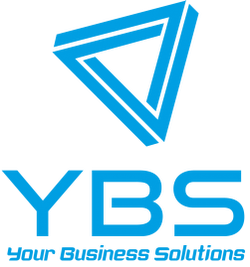Ethical SEO Principles
Most people have heard of Search Engine Optimisation (SEO) but did you know that certain aspects of it be classified as “Ethical SEO”? So does this mean that there is also “Un-ethical SEO” too?
The answer is, of course, yes, although these two sides of the coin are also referred to as “White Hat” and “Black Hat” SEO as well.

But what does this all mean?
What it means is that the process of Search Engine Optimisation, and the activities that are encompassed within this concept, can be divided into aspects that are “acceptable” (ethical or white-hat SEO) or un-acceptable (black hat SEO) although who can legitimately make this distinction is a bit more difficult to explain. In practice, the Search Engine owners such as Google, Bing and YAHOO are the people who decide whether or not any particular practice is ethical or not.
In general terms, what each of these companies mean is that any aspect of a website that is designed to “trick” a search engine into producing a “search result” in preference to other possible results that might be more “relevant” that the former, may well be regraded as “unethical”.
Google’s principal philosophy is to provide “people searching the internet” with the most RELEVANT, HIGH QUALITY pages based on the search parameter, or “search term” that the person has used. If the SEO activities that you carry-out on your website try to get around a lack of relevance or quality by trying to fool the search engines that your web pages DO have these qualities, then there’s every chance that whatever you have done will be classified as unethical!
Consequences of NOT using Ethical SEO principles
The majority of websites that generate business for their owners are sites that are well optimised, and have therefore been “indexed” by the main search engine owners. In order to be found on the internet in the first place, you MUST be indexed. If you are NOT included in the search engine companies indexes, then the ONLY way that people can get onto your website is to enter your web address directly – you cannot be found by the search engines if you are not in their index.
One of the most “catastrophic” things that can happen to any website is to be “de-indexed” by the main players. If this happens then your website is as good as “dead”. If you, or your SEO providers carry out any unethical SEO work, then this is a risk that you face.
Common Un-ethical SEO Practices
1. Unrelated Keywords
Don’t: Add irrelevant keywords to the copy for extra page hits.
Example: “Kanye West would use our Dyson vacuum cleaners if he owned cats.”
Do: Keep the content focused on a specific topic so users find what they are searching for.
Example: “Our Dyson vacuum cleaners effectively suck up dust, dirt, and pet hair.”
2. Keyword Stacking and Keyword Stuffing
Don’t: Repeat keywords to the extent that it reads like gibberish in a sentence or image alt text.
Example: “Picture frames picture frames pictures pictures pictures.”
Do: Write sentences that make sense, have a reasonable keyword density, and that use semantically related words instead of endlessly repeating keywords.
Example: “Our photo framing services can accommodate large formats to ensure everyone gets the big picture.”
3. Tiny Text, Hidden Text, and Hidden Links
Don’t: Put illegible text at the bottom of the page, make the text the same color as the background, or format text or images that are visually undetectable as links.
Example: “This is a short sentence full of illegible gray text.”
Do: Write content that is intended to be read, contrast the text with the background color, and make links obvious.
Example: “The Canon G10 camera has both the features of professional cameras and the convenience of portable point-and-shoots.”
4. Cloaking
Don’t: Present search engines with one set of content and site visitors with another, tricking visitors from search engines into experiencing a page of substantially different content.
Example: A user searches for “happy octopus”, clicks on a search result that appears to be about sea creature psychology, and is greeted with pornography.
Do: Be honest and create Web pages that visitors want and expect to see based on the description on the search engine results page (SERP).
Example: A user searches for “Hello Kitty” and is taken to the official website of the franchise.
5. Doorway Pages or Gateway Pages
Don’t: Haphazardly stuff pages with keyword phrases with the primary goal of achieving a high ranking and then automatically redirect visitors to a separate page.
Example: A page, filled with keyword phrases but little coherent content, that uses JavaScript or a meta refresh tag to redirect visitors to a separate and potentially unrelated page.
Do: Create landing pages and information pages for humans that are rich in content.
Example: A sugar manufacturer detailing the advantages of raw sugar over high fructose corn syrup.
6. Bait-and-Switch or Page Swapping
Don’t: Get a Web page indexed and ranked and then change the page entirely.
Example: Clicking on a result in the SERP takes the user to a page that is completely different from the keywords used for searching and the description provided in the SERP.
Do: Update Web pages regularly while keeping the overall topics of the pages intact.
Example: An article about The PIrate Bay, a torrent site, is updated with news related to the trial, verdict, and media response.
7. Duplicate Content or Mirror Site
Don’t: Copy a substantial amount of content from another website, with or without permission.
Example: A website reprints an authoritative article found elsewhere to increase the number of visitors.
Do: Quote in small chunks, cite sources, and write original content.
Example: An article about the sound quality in various models of headphones cites reviews of headphones found on other sites.
8. Spam Blogs or Splogs
Don’t: Blog using software that generates garbled text with keyword phrases for the sole purpose of getting visitors to click on ads.
Example: “Caffeinating the Mountain Dew with MSG is a summer treat safer than Guinness.” Do: Put time into your blog posts to write something coherent, novel, and fresh.
Example: “Caffeine is drug that is safe to consume in moderation, but consistently large doses over time may cause anxiety and sleep disorders.”
9. Blog Spam or Comment Spam
Don’t: Automatically post links as comments on blogs to increase the number of inbound links.
Example: “Great post! |3uy ch34p v14gr4 w1th fr33 5h199ing.”
Do: Post insightful and constructive comments related to the article or blog post.
Example: “Thanks for explaining Kafka’s ‘The Metamorphosis’ in such detail. Have you thought about comparing it to Cronenberg’s 1986 remake of ‘The Fly’?”
10. Trackback Spam
Don’t: Abuse trackbacks with links to unrelated links on blogs.
Example: “[…] randomized keyword phrases related keyword more random keywords […]”
Do: Let blog authors know about posts being referenced from legitimate sources.
Example: “[…] read a blog post on Moleskine notebooks that brought up the […]”
11. Spam Ping or Sping or Pingback Spam
Don’t: Notify ping servers of new content several times per minute to give the illusion that content is new.
Example: Software that automates the process of notifying various ping servers of supposedly new content.
Do: Set up blogging software to ping centralized services once when a blog post is published.
Example: Populate the “Update Services” box in WordPress settings to notify pingback services of new blog entries.
12. Referrer Spam
Don’t: Advertise a website by making repeated requests using a fake referrer URL to websites that publicize referrer statistics.
Example: Scripts that automatically follow links on illegitimate sites can land spam websites in publicized referrer logs.
Do: Link to content that is relevant and allow readers to follow the links naturally.
Example: “Ask MetaFilter is a valuable resource for finding free answers to questions that are challenging to find on the Web.”
13. Link Farms
Don’t: Seek links from or link to sites with unrelated or low quality content in an attempt to improve visibility in the SERPs.
Example: A long list of unrelated links and with supporting content can be found at pagehole.com.
Do: Link to and request links from relevant and high quality websites where a connection between the two websites is logical and beneficial for site visitors.
Example: It is reasonable to ask a blogger who links to Durham, NC pizzerias to link to your page reviewing vegetarian pizzerias in Durham.
14. Cybersquatting or Domain Squatting
Don’t: Register a domain with a trademarked word in the name with the intent to profit off of the association.
Example: juliaroberts.com was originally registered by Russell Boyd. It was later handed over to Julia Roberts after it was determined in court that Boyd “registered and used the domain name in bad faith”.
Do: Brainstorm and research relevant keywords for an easy-to-remember domain name relevant to the content the website will host.
Example: aboutcandybarwrappers.com sells personalized candy bar wrappers.
15. Typosquatting or URL Hijacking
Don’t: Register a domain name that is a misspelled version of a popular website or a competitor in an attempt to mislead visitors.
Example: whitehouse.com may confuse users who intend to visit whitehouse.gov.
Do: Make a website that becomes popular for its richness in content.
Example: Google, YouTube, Facebook, Twitter, and countless other websites made names for themselves instead of relying on popular keyword phrases or misspellings.
16. Social Networking Spam
Don’t: Target demographics on social networking sites and message people with advertisements.
Example: “Visit example.com to see pics of me and my friends ;).”
Do: Network, find people with similar interests, and exchange contact information when there is mutual interest.
Example: “Hello Frank, we met at the Web Design Meetup last week. I like what you had to say about accessibility and usability. What was that site you mentioned that had the list of usability studies?”
17. Cookie Stuffing or Cookie Dropping
Don’t: Stealthily place affiliate cookies on computers.
Example: A spammer inserts a URL to a fake image on a message board that puts affiliate cookies on the computers of forum visitors.
Do: Link to retail websites with affiliate links to earn a percentage of sales.
Example: “You can support this blog by following my affiliate links to Amazon.”
Thanks go to Tevan Alexander who posted these “black hat” practices on his blog at: https://designhammer.com/blog/17-black-hat-seo-techniques-avoid




